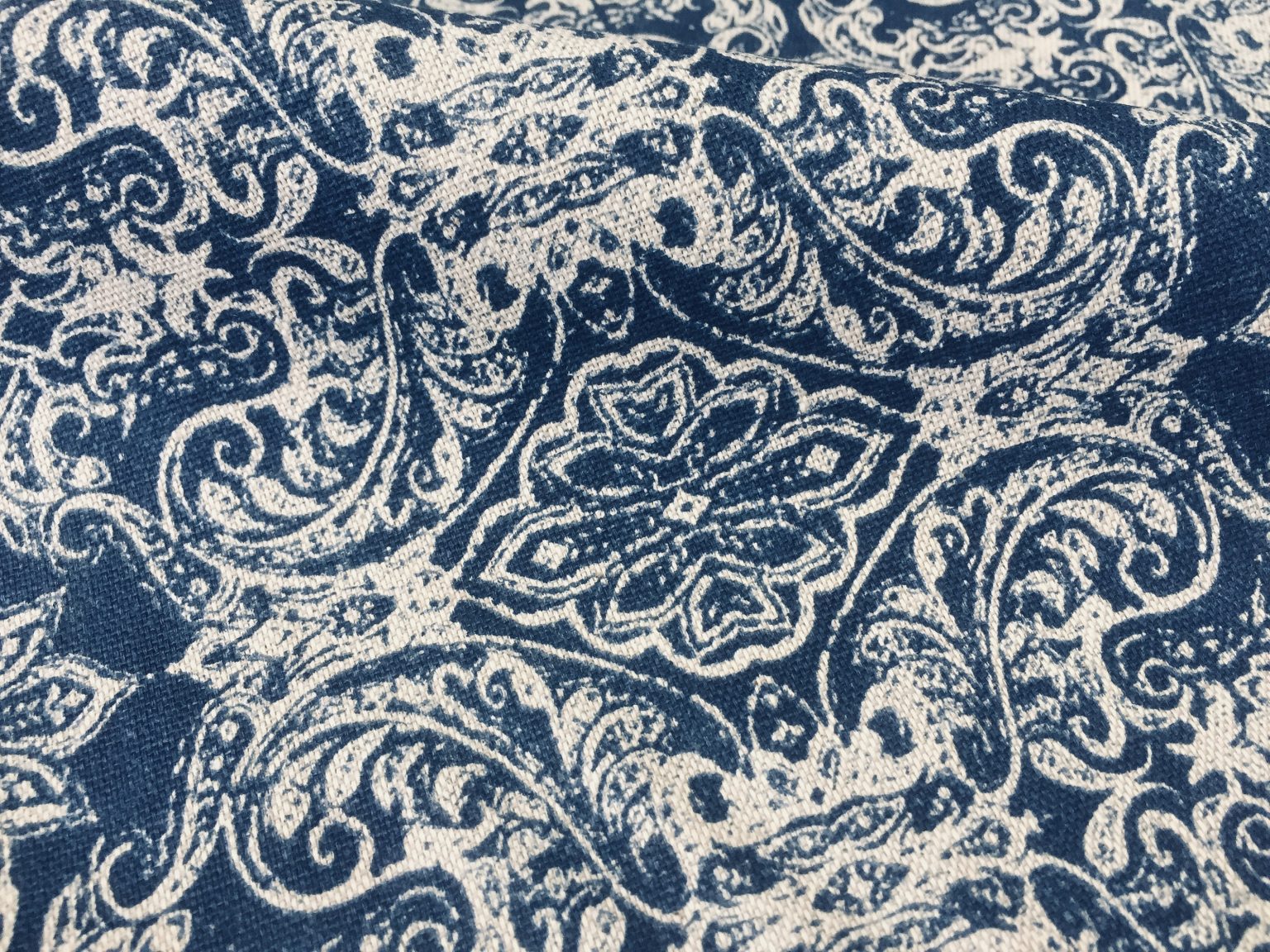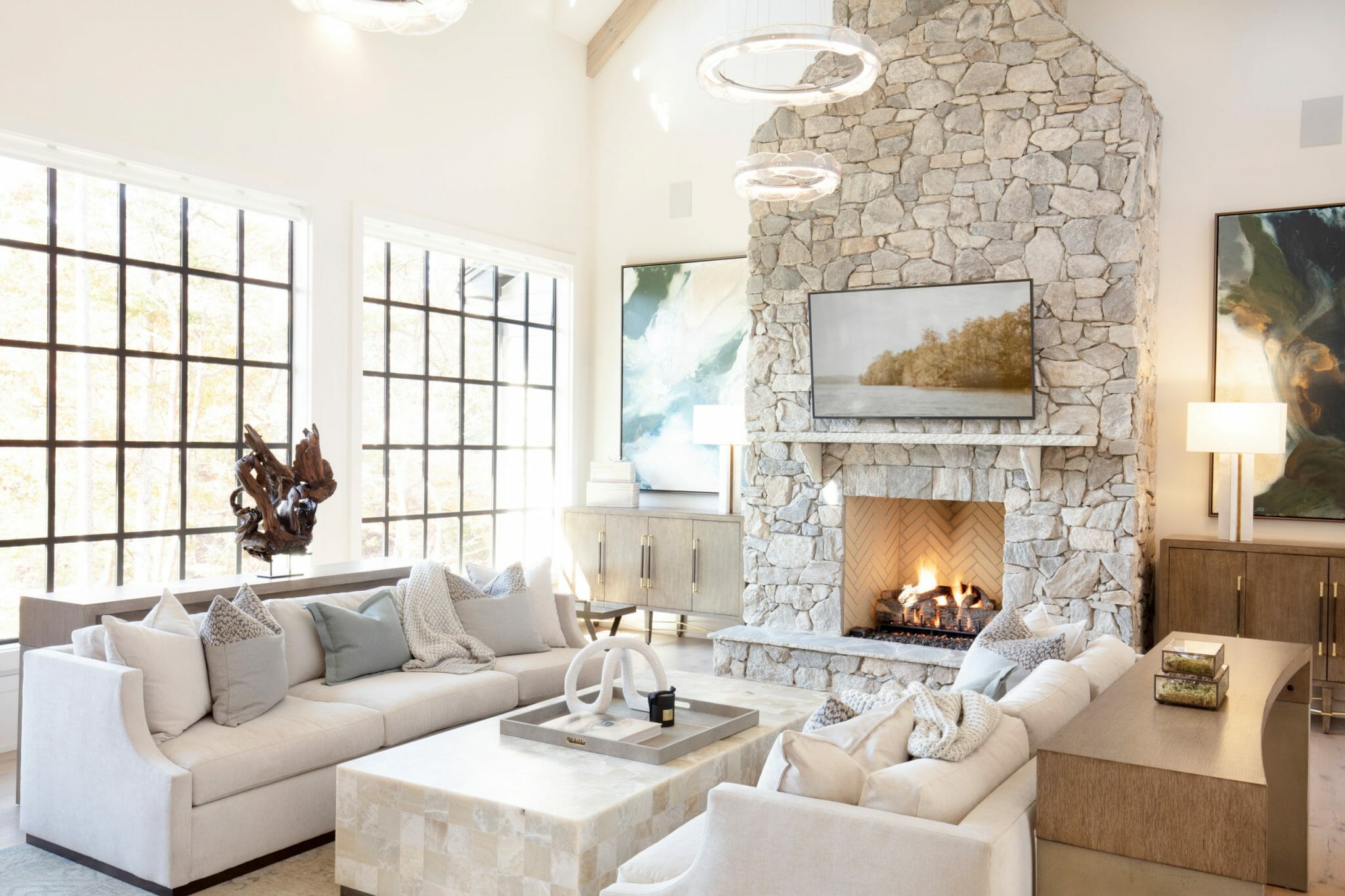Gothic Revival House Design coincided with the medieval era and was popular in the Victorian period. This style was characterized by pointed arches, high ceilings, and intricate patterns. This revival style was most popular in the United States and sought out for its romantic architecture and evocation of the European's past. This house design was typically constructed using a wood frame and used many decorative shapes to add its defining elements. One of the most appealing aspects of a Gothic Revival house design is its symmetrical watchtower, which rises from the center of the roof and often contains a turret with stained-glass windows.Gothic Revival House Design
Rococo House Design emerged in Europe and is known for its ornate and extravagant decoration. The exterior of this house design was often less structured and used an asymmetric layout. The grandeur of this style is achieved by its varying materials such as multicolored façades, decorative cornices, and iron balconies. Interiors are often detailed with elaborate carved moldings, murals, inlaid wood floors, and frescoed ceilings. This style is primarily associated with upper-class well-to-do and featured prominent homes across Europe.Rococo House Design
Federal House Design was introduced in America during the Federal period of the late 1700s and early 1800s. It was a prominent style for a time, and its influence can still be seen in some of America’s older neighborhoods. This design was characterized by its symmetry, smooth lines, and classical elements. It was often constructed from brick and featured double-hung windows symmetrically arranged in five or six over one or two stories. The roof was often hip or gable with a shallow pitch and adorned with ornate, triangular pediments. Interiors featured interior shutters, marble mantles, and classical details.Federal House Design
American Colonial House Design was a popular style in the United States during the colonial period. This style was constructed mostly from wood and had a simple structure including a wooden frame and shingle siding. It featured thick double-hung sash windows and traditionally included a porch that ran across the front of the house. This design can be found in early American settlements throughout the country, such as in Plymouth, Massachusetts. The style is often regarded as a classic image of early American architecture.American Colonial House Design
Classical House Design emerged from Greek and Roman architecture and featured symmetrical shapes, Doric columns, and triangular pediments. This style was prevalent in Europe during the 18th century and made its way to the United States during the later part of the 19th century. It is commonly seen on prominent government buildings in Washington, D.C. as well as many private homes. Features of this style include grand entryways and symmetrical window patterns, and the interior often featured lofty ceilings, marble mantles, and open entry columns.Classical House Design
Neo-Classical House Design began to take shape during the Baroque and Renaissance periods and is a continuation of the Classical style. It is generally distinguished by its balance of rectilinear shapes and curves, as well as its use of materials like brick, stone, and wood. This style peaked in popularity during the 18th and 19th centuries and is still a prominent feature in many contemporary homes. It often includes a grand entrance and foyer, grand stairs, and a parlor.Neo-Classical House Design
Italianate House Design was introduced in England during the early 19th century and seen throughout the United States during the late 19th century. This style was characterized by its low-hipped roof, tall columns, multiple windows, and decorative windows. This design is still a well-known style in architecture and can be seen in a variety of architectural styles. The style is often seen in the Midwest and is usually patterned with brick or stone and has multiple chimneys that are made from wood.Italianate House Design
Queen Anne House Design emerged in the 19th century as a symbol of progress and modernization. This style is mentioned often in Late Victorian or Queen Anne period of architecture and stands out for its unusual shapes and bright colors. Its features include distinctive turrets, towers, wraparound porches, and complex rooflines. This design often included generous verandas, bay windows, and abundant woodworking details. Stained-glass windows and pointed-arch detailing are also seen with this design.Queen Anne House Design
Georgian House Design is based on the late Baroque-style architecture and was popular throughout the 1700s till the early 19th century. Its features include a low and flat roofline, a symmetrical façade with five or six bays, and a symmetrical entrance. This house design also features a columned porch and detailed trim—often adorned with finials, shutters, and pilasters. The interiors also featured elaborate plasterwork, wall paneling, and detailed woodwork.Georgian House Design
Medieval Revival House Design emerged in popular culture during the Victorian period and is made up of elements from the Middle Ages. This style is often seen on churches and public buildings that feature grand turrets and pointed arches. This design is often seen with granite structures, stout columns, and brightly colored ceramic tile. The homes made from this design may also have a tall, round tower with a conical roof, stained-glass windows, and intricately carved stonework.Medieval Revival House Design
Tudor Revival House Design is inspired by the Late Medieval period from England and can be seen in many neighborhoods in America today. This style has a steeply pitched roof, bay windows, tall chimneys, and half-timbering along the exterior walls. Its interiors are often adorned with dark-wood Tudor paneling, carved stone fireplaces, and grand oak staircases. It is a popular style for many suburban homes, with its distinctive symmetrical façades and elaborate ornamentation.Tudor Revival House Design
What is Renaissance Architecture?
 Renaissance architecture is a style of architecture that originated in Italy during the late medieval period and rose to prominence during the Italian Renaissance. This style of architecture is characterized by grand palaces, churches, and public buildings with large-scale classical elements such as columns, pediments, and domes. Other elements of Renaissance architecture include the use of intricate stone carvings, large windows, and a symmetrical exterior design. The popularity of the style continued throughout Europe in the 17th and 18th centuries and is still visible in many cities today.
Renaissance architecture is a style of architecture that originated in Italy during the late medieval period and rose to prominence during the Italian Renaissance. This style of architecture is characterized by grand palaces, churches, and public buildings with large-scale classical elements such as columns, pediments, and domes. Other elements of Renaissance architecture include the use of intricate stone carvings, large windows, and a symmetrical exterior design. The popularity of the style continued throughout Europe in the 17th and 18th centuries and is still visible in many cities today.
Renaissance House Design
 Renaissance house design is a unique and stylish form of architecture that has been adopted by many people today. Utilizing the traditional elements of Renaissance architecture, house designs have been tailored to create luxury residences with grandiose designs. This style of architecture can be used to both build a brand-new home or to renovate an older one with the goal of creating an elegant, timeless living space.
Renaissance house design is a unique and stylish form of architecture that has been adopted by many people today. Utilizing the traditional elements of Renaissance architecture, house designs have been tailored to create luxury residences with grandiose designs. This style of architecture can be used to both build a brand-new home or to renovate an older one with the goal of creating an elegant, timeless living space.
Features of a Renaissance House
 The main features of a Renaissance house design consist of sweeping
arches
, grand entrances, symmetrical facades, symmetrical window and door placements, and large
columns
. These features create the classic look of Renaissance architecture which makes it a popular style of house design. In addition to these features, many Renaissance homes have intricate stonework designs and carvings throughout the exterior and interior of the home. These features, combined with modern amenities, create unique and stylish living spaces that will last for generations.
The main features of a Renaissance house design consist of sweeping
arches
, grand entrances, symmetrical facades, symmetrical window and door placements, and large
columns
. These features create the classic look of Renaissance architecture which makes it a popular style of house design. In addition to these features, many Renaissance homes have intricate stonework designs and carvings throughout the exterior and interior of the home. These features, combined with modern amenities, create unique and stylish living spaces that will last for generations.
Components of a Renaissance House
 Renaissance house designs are composed of a variety of components that create the overall look and feel of the house. The most common components are pediments,
domes
, niches,
statues
, columns, arches, and balconies. Pediments are triangular-shaped structures located at the top of the house which can be either plain or ornamented with carvings. Domes are round, domed architectural elements placed at the center of the house which can be either flat or in the form of a cupola. Niches are rectangular or square openings located within walls or in other internal spaces and can be decorated with sculptures or other ornate carvings. Statues are sculptures that have been placed in certain outdoor areas to lend a more ornate and classic look. Columns are large structures that are often used to frame the entrance of the house and can be either plain or elaborately decorated. Lastly, arches are in the form of a semi-circle and are placed in the facade of the house as well as in doorways and staircases for a visually striking appeal.
Renaissance house designs are composed of a variety of components that create the overall look and feel of the house. The most common components are pediments,
domes
, niches,
statues
, columns, arches, and balconies. Pediments are triangular-shaped structures located at the top of the house which can be either plain or ornamented with carvings. Domes are round, domed architectural elements placed at the center of the house which can be either flat or in the form of a cupola. Niches are rectangular or square openings located within walls or in other internal spaces and can be decorated with sculptures or other ornate carvings. Statues are sculptures that have been placed in certain outdoor areas to lend a more ornate and classic look. Columns are large structures that are often used to frame the entrance of the house and can be either plain or elaborately decorated. Lastly, arches are in the form of a semi-circle and are placed in the facade of the house as well as in doorways and staircases for a visually striking appeal.
Benefits of a Renaissance House
 The main benefit of a Renaissance house design is its classic look and timeless appeal. When well-designed and built, with modern amenities, a Renaissance house can be a perfect fit for anyone looking for an elegant and sophisticated living space. Additionally, these types of homes are highly sought-after and can retain their value over time. Furthermore, the intricate stonework and carvings throughout the house can elevate any living space and create a unique and breathtaking view.
The main benefit of a Renaissance house design is its classic look and timeless appeal. When well-designed and built, with modern amenities, a Renaissance house can be a perfect fit for anyone looking for an elegant and sophisticated living space. Additionally, these types of homes are highly sought-after and can retain their value over time. Furthermore, the intricate stonework and carvings throughout the house can elevate any living space and create a unique and breathtaking view.
Conclusion
 Renaissance house design is a timeless and classic style of architecture that has been employed to create beautiful living spaces for centuries. Incorporating the traditional elements such as pediments, domes, columns, and arches, as well as intricate stonework and carvings, these homes are sure to be a stylish addition to any property.
Renaissance house design is a timeless and classic style of architecture that has been employed to create beautiful living spaces for centuries. Incorporating the traditional elements such as pediments, domes, columns, and arches, as well as intricate stonework and carvings, these homes are sure to be a stylish addition to any property.







































































































